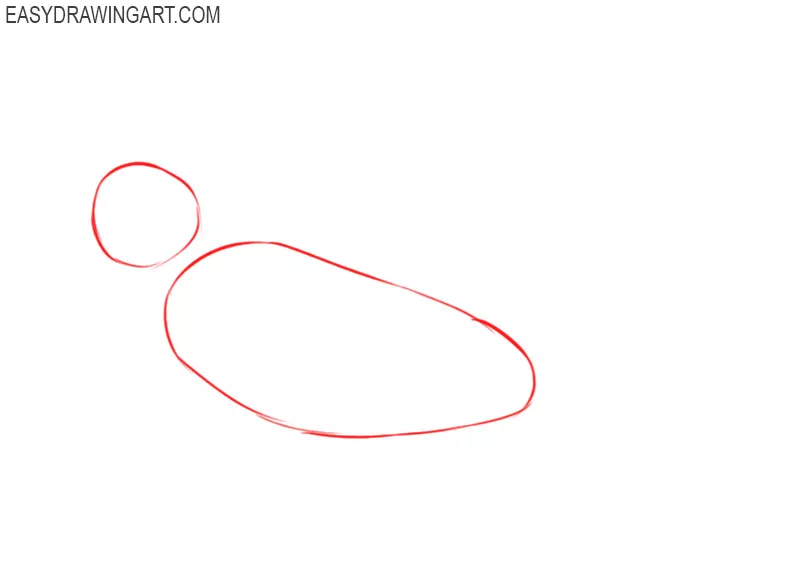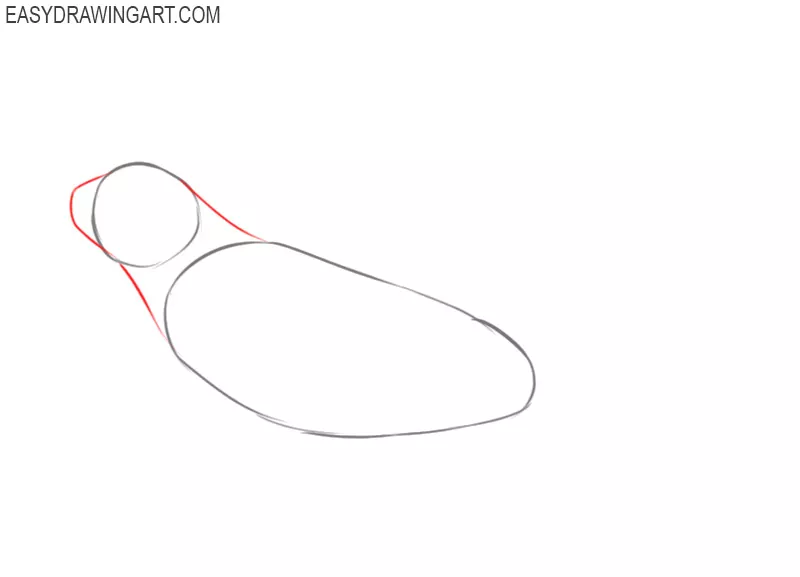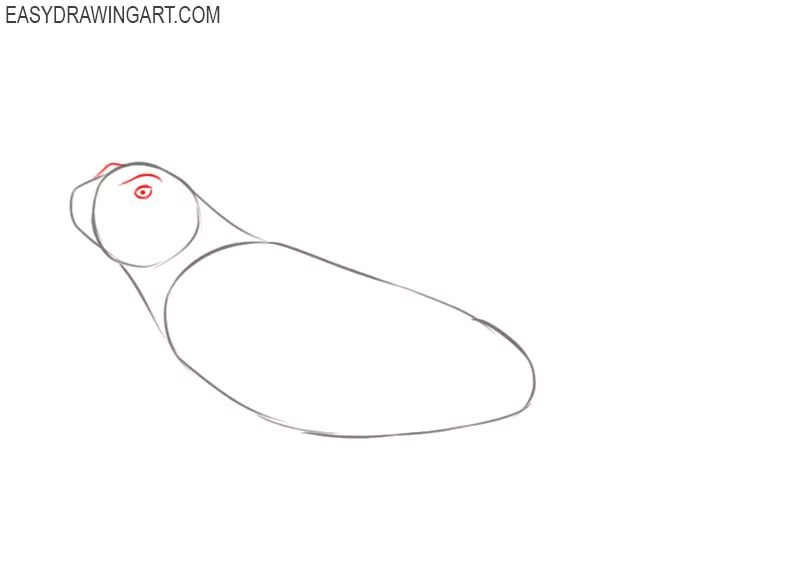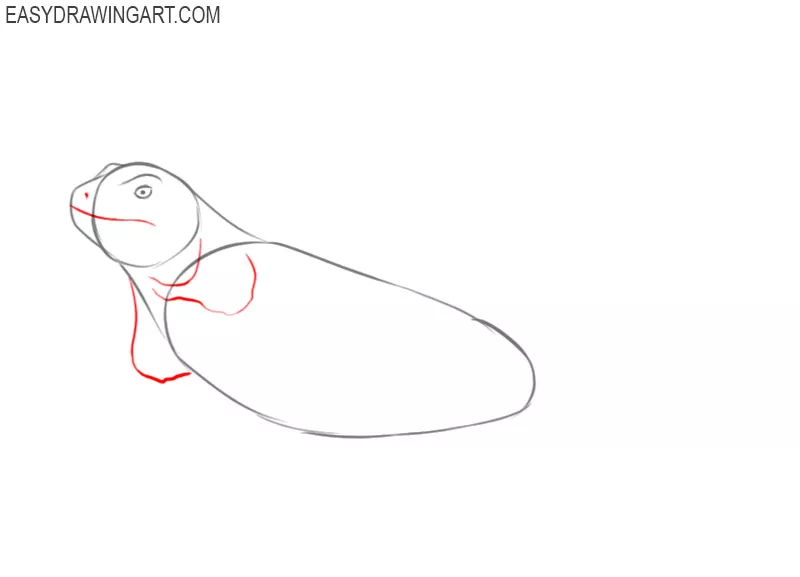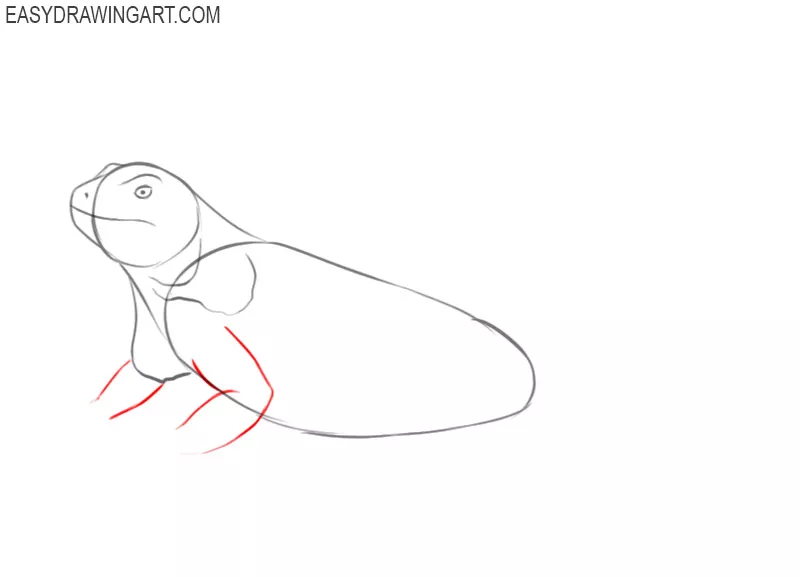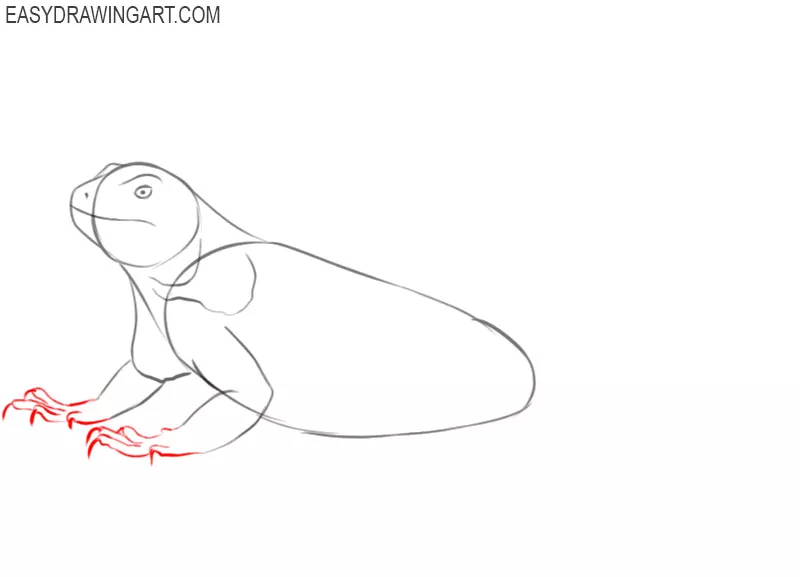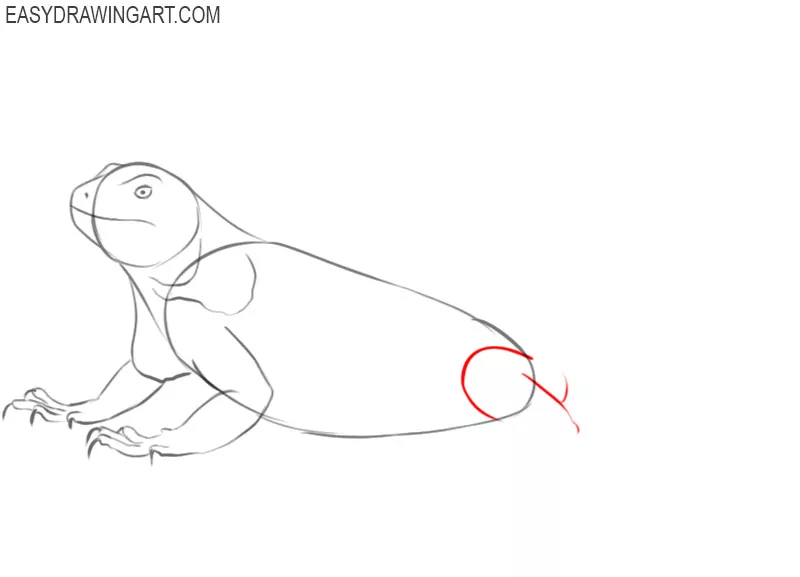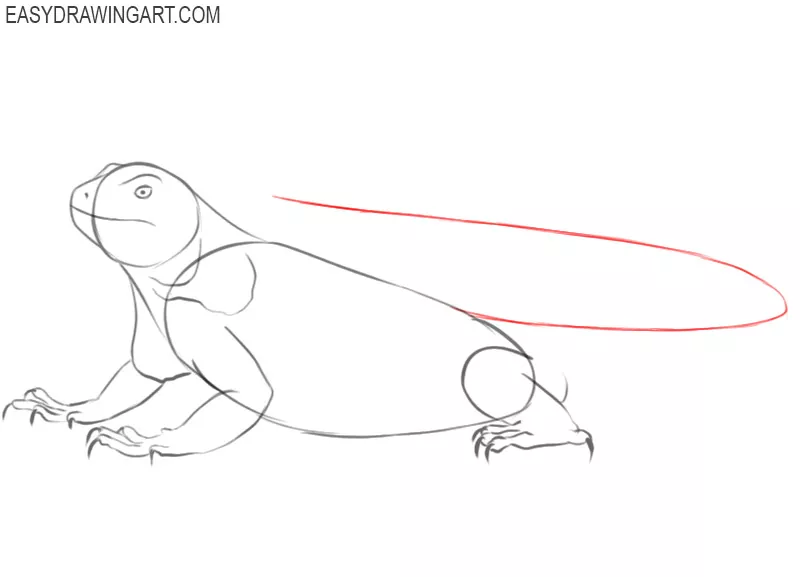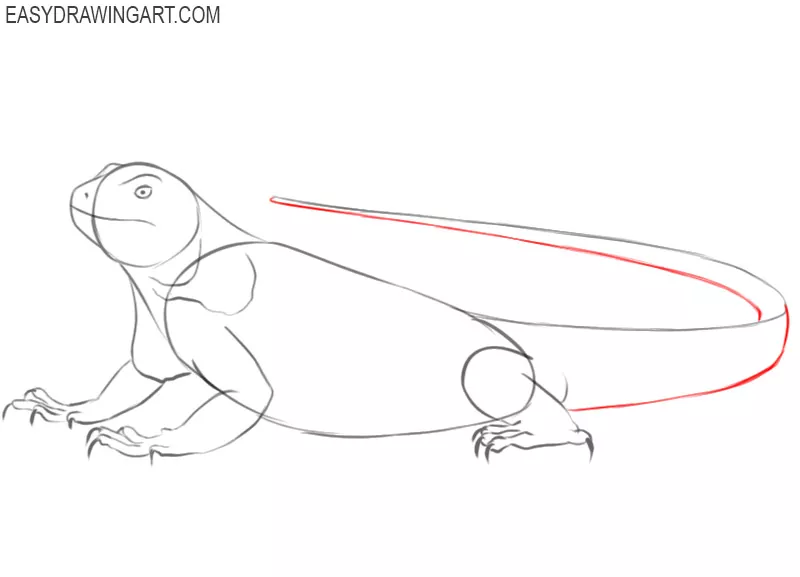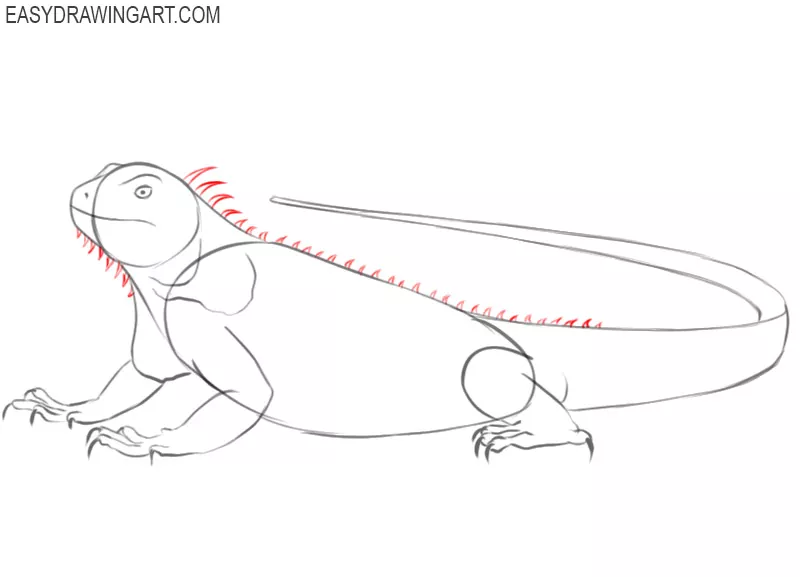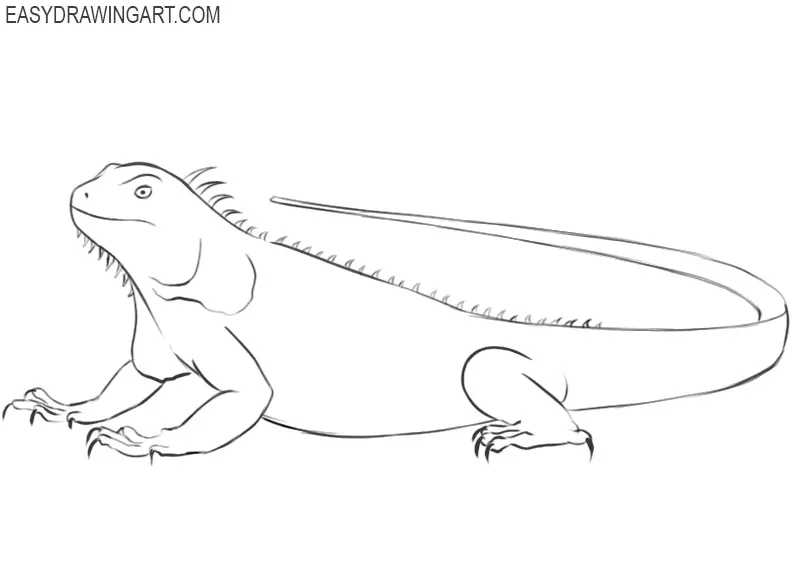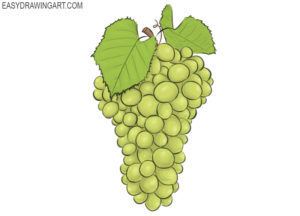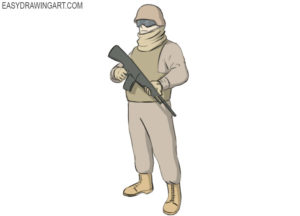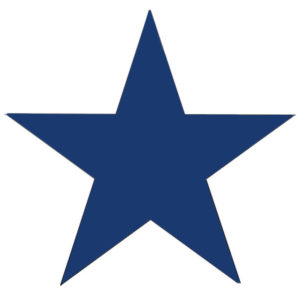How to Draw an Iguana
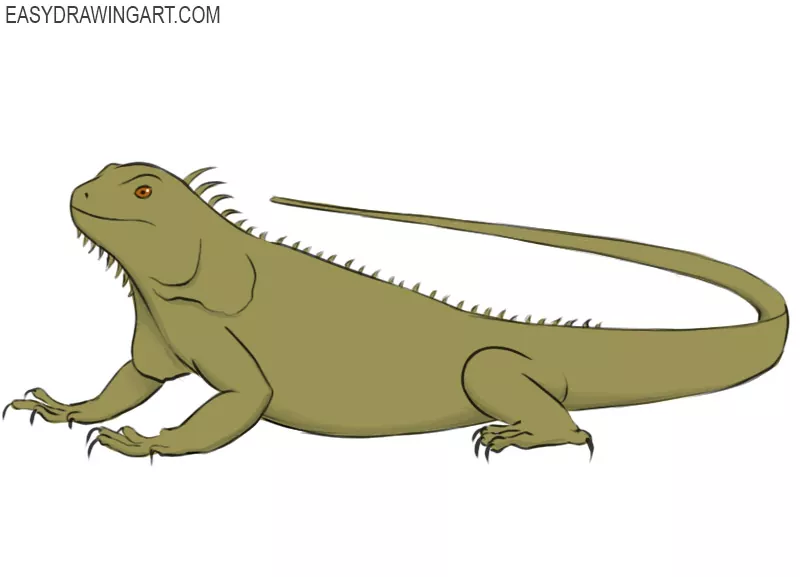
Now we will figure out how to draw an iguana. This is an atypical animal for our area, so the interest in it is quite great. Everyone wants to surprise their friends and learn how to draw something unusual. Our step-by-step instructions can help with this. To work, you will need pencils of different softness. The lesson is simple enough, however, it requires perseverance and attention to detail.
How to Draw an Iguana
Step 1 – Sketch the Contours of the Head and Torso
First, draw two rounded shapes. The larger figure represents the body of the iguana. As you can see, this shape is asymmetrical and is located slightly obliquely. The close-up is the outline of the iguana’s head. Don’t try to draw these shapes perfectly straight.
Step 2 – Sketch of the Neck and Head of an Iguana
Connect the head and torso of our iguana with two short lines to create the neck. Make these lines soft with minimal pressure on the pencil. After that, add the outline of the front of the iguana’s face, which looks like a frustum.
Step 3 – Draw an Iguana Eye
Iguanas are able to look in different directions due to the lateral position of the eyes. Due to the fact that we are drawing the iguana from the side, we can only see one eye. So, draw one small rounded eye and a small pupil. For a more realistic look, draw two eyebrows.
Step 4 – Draw the Mouth and Nose of the Iguana
Finish drawing the iguana’s face by depicting the line of the mouth and nose. Do not forget about the large fold of skin, which is localized under the neck of our lizard. Also, sketch out the outline of the shoulder of the right hand.
Step 5 – Draw the Parts of the Iguana’s Front Legs
So, we continue the guide on how to draw an iguana step by step. Draw the front legs. The paw closest to us is bent at a right angle. The forearms have smooth, graceful curves.
Step 6 – Draw the Fingers with Claws
The iguana’s long, elastic fingers are an excellent evolutionary device that allows them to move dexterously and quickly across different surfaces. These guys even know how to crawl up sheer walls and rocks. So draw these long fingers with pointed claws.
Step 7 – Sketch of the Upper Part of the Hind Leg
So now we move on to drawing the back of the iguana. Draw a rounded outline for the thigh. Due to the peculiarities of the angle, we see only one hind leg of the iguana. Note that this foot is positioned slightly obliquely.
Step 8 – Complete the Sketch of the Hind Leg
Draw a short but wide foot. By the way, the lizard’s paw should be wide and flat enough to provide a good grip on any surface. Be sure to draw long, curved nails on each toe.
Step 9 – Sketch the Tail of an Iguana
Draw the top of the outline of the long, curved tail. Arrange the iguana’s tail according to your imagination. In our case, it looks like a line with one noticeable bend. This is quite similar to the tail of any other lizard.
Step 10 – Finish Drawing the Tail
Finish off the tail with two smooth lines. Be sure to use the line from the previous step as a guide. Ideally, you should have a long, graceful yet powerful tail.
Step 11 – Draw the Horny Spines of the Iguana
A feature of the iguana’s appearance is the presence of large pointed spines throughout the body. Draw these spines, paying attention to the gradual decrease in size in the caudal direction. You can see the same spikes located under the head.
Step 12 – Remove Extra Lines
This step is necessary so that you can check the actions from the previous steps. If you notice any mistakes, fix them now. After that, you can remove the extra guidelines and move on to working with colors.
Step 13 – Paint the Iguana Drawing
You can choose any color for your iguana. We decided to go with the traditional light green color. A darker shade of this color is a great choice for the shadows. Paint the iguana’s eye with bright orange.

Well, is your exotic pet already showing off on paper? We are sure you have a wonderful drawing. We took into account all your wishes and prepared step-by-step drawing lessons for a wide variety of wild animals. And we hope you found this guide helpful. We are looking forward to your feedback because it helps us to become better!


